Climbing Mount Kilimanjaro
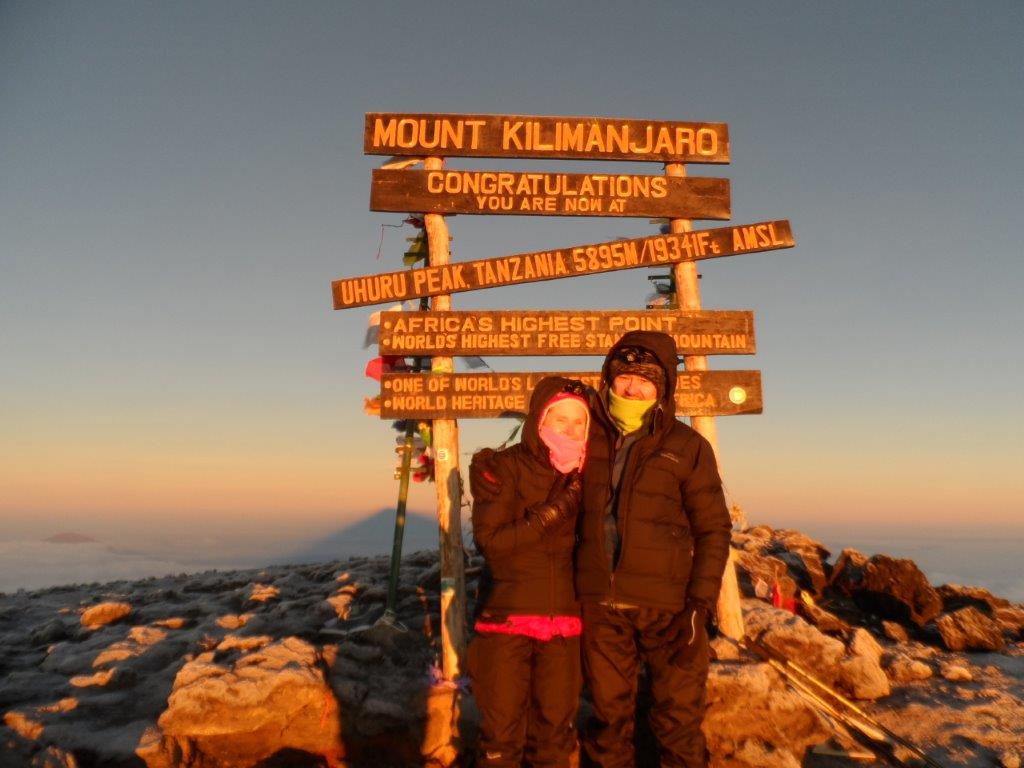
We were originally planning on climbing Kili in 2012. We however had an unexpected opportunity to trek to Everest Base camp including spending a few nights at base camp. Very few people are lucky enough to trek to Everest base camp during climbing season and almost no one gets to spend time there unless part of a climbing expedition. The opportunity was too good to pass up.
So in October 2014 we eventually managed to organise climbing Kili. This was part of a longer holiday which included visiting a sponsor child in Kenya. In Tanzania we also went on a safari that included Ngoro crater and the Serengeti. We finished off with a week or so in Zanzibar.
We found a great company in Team Kilimanjaro. They organised all aspects of our trip from when we landed in Nairobi. With prices being so reasonable, we were able to arrange private tours.
Day 0 – Team Kili arranged a flight to Arusha and from there they took us to Onsea House. This was a very nice small hotel with only 5 suites. In the evening we met our guide and assistant guide for a discussion on our expectations and a gear check. It seemed we had everything we needed and so we were ready to leave the next morning.
Our itinerary for the trek was a 7 day Rongai route trek:
Day 1 – Nalemoru Gate (1950m) to Simba Camp (2700m) – 3 hours/7km
Day 2 – Simba Camp (2700m) – Kikilelewa Camp (3600m) – 6.5 hours/12km
Day 3 – Kikilelewa Camp (3600m) – Mawenzi Tarn Camp (4330m) – 3 hours/4km
Day 4 – Mawenzi Tarn Camp (4330m)- acclimatization hike up Mawenzi’s North Corrie to (4700m)
Day 5 – Mawenzi Tarn Camp (4330m)- Kibo Hut (4700m)
Day 6 – Kibo Hut (4700m) – Gilman’s Point – Stella Point – Uhuru Peak Summit (5995m) – Horombo Hut (3700m) -6 hours UP/10 minutes on the summit/3 hours DOWN – 10.5km round trip from Kibo to summit and back – 14km from Kibo to Horombo
Day 7 – Hike out to the Marangu gate – 20km

Day 1 – Nalemoru Gate (1950m) to Simba Camp (2700m) – 3 hours/7km
With a 4 hour drive from our accommodation to the start of the trek, we left after an early breakfast. The drive itself was uneventful but we did have some great conversations with guides. On arriving at Nalemoru we met the rest of our entourage.
We enjoyed lunch while our gear was distributed amongst the porters. Including our guides and porters, we had 11 people plus the 2 of us. All we had to do was carry day packs. These guys did all the hard work.
The first days walk was short. We started slowly knowing that we would need to take it easy to slowly acclimatise. The path took us through forest and farmland. Luckily it was quite cool when we were in the forest but it was very hot when in the sun.
Simba Camp is a very picturesque little camp site which is quiet and surrounded by bushes and scrub. The food the cook provided was excellent!
Day 2 – Simba Camp (2700m) – Kikilelewa Camp (3600m) – 6.5 hours/12km
After watching a beautiful sunrise, we finally caught our first glimpse of the mountain this morning.
Every morning we were woken up by ‘jambo, jambo’ as one of the porters bought a mug of tea to our tent. Every morning and evening we were also given a bowl of hot water that was known as ‘washy, washy’ that we used to clean ourselves with.
We had a hearty breakfast. There was always more than enough. Water came into conversation and we were told that they treated all of the water for us by boiling it. None the less we also used our Steripen (ultraviolet light treatment) just to be sure. None of us had any problems with stomachs during the duration of the trip. Good thing, we each drink about 6 litres a day when trekking.
Todays walk would be the second longest day. The path took us through the remainder of the forest and then into the moorland zone. The path was gentle and dry. We stopped every hour or so and had lunch near to the second cave. Along the way we were shown some of the lava tubes which were dotted around the side of the mountain
Today we found out just how amazing the porters really are A) because of the amount they carry and B) the way in which they carry it. Every evening when we got back to camp our tents would be pitched with our kit bags awaiting us inside. As soon as we emerged into camp they would come running over and take our day sacks off us.
We arrived at Kikelelwa Camp late in the afternoon. The path was a little steeper coming up and down a lot.
Day 3 – Kikilelewa Camp (3600m) – Mawenzi Tarn Camp (4330m) – 3 hours/4km
At the Park Gates when you begin your trek there is a big wooden sign with 10 do’s and dont’s. Number 2 on this sign is ‘do not climb above 3,500m if you have a cold or breathing problems’ We were fortunate to not suffer any altitude effects.
It was a rather nice breakfast of sausages, bacon, omellete and toast with the obligatory porridge today.
Today would be a reasonably short day of 3-4 hours of slow walking. We remained in the moorland zone but it became more sparce. If I remember rightly, today’s walking was quite uneventful really! It was quite dramatic seeing the vast and majestic Mawenzi Peak for the first time, it was shrouded in cloud making the camp look very insignificant:
We went on an acclimatisation walk later on to a nearby ridge at around 4,500m. It was a nice scramble in places with some fantastic views. We came down again to the camp and we rested in the tent waiting for dinner.
One thing we appreciated was having a toilet tent. The porter responsible for this luxury received a nice tip.
Day 4 – Mawenzi Tarn Camp (4330m)- acclimatization hike up Mawenzi’s North Corrie to (4700m)
Day 4 was strictly an acclimatization day. We decided we would head up into Mawenzi’s north corrie as far as we could – as long as we were feeling ok. We took it slow because we had no reason to hurry. We slowly made our way up the sometimes trail/sometimes scree slopes to the top of the corrie at 4700m. At this point I had a pretty good headache building and decided this was about as high as I needed to go. At the top we got great views off to the south.
Day 5 – Mawenzi Tarn Camp (4330m)- Kibo Hut (4700m) – 5 hours/9km
We woke up feeling great and looking forward to the day – late tonight we would start our summit. Today was a fairly long walk of around 5 hours leaving the moorland zone behind and entering the alpine desert zone. As soon as we crossed a ridge the moorland vegetation stopped and it became a lot rockier. Before we reached ‘the saddle’ there were a lot of ridges that we had to go up and down which obviously made the path the steepest it had been so far.
As soon as we reached ‘the saddle’, which is a large flat space of desert, it became the coldest it has been so far because it is very windy and exposed with virtually no natural cover. Hats, gloves, balaclavas and windproofs all came out. We could see Kibo Hut way ahead of us and it never seemed to get any closer. On the way we took a detour to see a mummified buffalo.
Between lunch and an early diner, we set off on a short acclimatisation hike climbing one of the nearby hills. Kibo Hut isn’t a pleasant place I’m afraid to say. It’s cold, rocky, noisy and we knew that we aren’t going to get much sleep. After an early meal, we were in our tents by about 6pm. We would be woken at 11pm to set off for the summit at midnight.
Day 6 – Kibo Hut (4700m) – Gilman’s Point – Stella Point – Uhuru Peak Summit (5995m) – Horombo Hut (3700m) – 6hrs/5km Ascent, 5hrs/15km Descent
Well, we got some sleep and woke up at 11pm to get ready for our summit. What a nice surprise – it was snowing lightly creating a magical fairyland (but it was cold!). As always the guys had some food and drinks ready for us to eat and drink before we left. We had been told to dress warmly, and glad we did. On our legs we had thermal layer, hiking pants plus waterproof pants. On our body it was a thermal layer, a t shirt, a long sleeve shirt, fleece jacket, waterproof jacket and down jacket. Our heads had fleece buffs plus fleece beanie. We had two layers of socks and two layers of gloves. Wow, how did we walk in all this – and then we were still very cold at the top.
We were off by midnight with many teams already ahead of us. By this time our guides knew our capabilities and paced the climb to perfection. With the snow covered ground we had to be careful not to slip. We made slow steady progress, our path lit by our headlamps. The pace felt slow but we quickly started passing groups of people. Some of them were really struggling. It was so cold that at some point even our insulated water was frozen.
We knew that the first major landmark was the Hans Meyer Cave which is over 1/3 of the way to Gilman’s Point. It is also at the base of the notorious scree slope. The last bit of hiking up to Gilman’s was a relatively hard climb. We were really excited to get to Gilman’s – even though it was dark and cold. We knew we would pass back down this way, so we kept going. There were some really sick people at Gilman’s. On the way up I think we passed approximately 75-100 people – many of whom were seriously feeling the altitude.
From Gilman’s Point we were just below the crater rim. We followed a narrow icy ledge with a steep drop with the crater bottom to our right and we reached Stella’s Point quiet quickly. From there it went up-hill until the broad crater rim as we slowly made our way toward Uhuru Peak. It wasn’t long before I could see the summit sign. We got there just as the sun was beginning to rise and we had a huge smiles plastered across our faces as we made it to the top of Africa at sunrise. We took a few photos, but it was so cold with the windchill that we had to get going after about 5 minutes. So we didn’t stay long on the summit and made really quick time back down to Gilman’s – taking pictures along the way. The glaciers up there are stunning and I’m thankful I got to see them before they are gone. Then it was on to the scree slope – wow was that a crazy ride. We surfed scree for what seemed like 500m. The guys had setup a rest camp for us. When we arrived, we got big smiles and congratulations from the team of porters – love these guys. We were feeling great and wanted to continue to our camp for the night. The guides suggested we rest first, which we did. We took a long rest at camp before packing up and then slowly made our way toward our final camp
Instead of coming back down the Rongai Route we came down the Marangu Route. The descent path was much busier than it was coming up the Rongai route, we saw some people getting brought down on stretchers by the porters. They were basically running using glorified wheel barrows but my hat goes off to them as they done a fantastic job in evacuating people quickly.
The path seemed very straight with some hills and ridges along the way, it was just very long. Alpine desert and rocky terrain eventually turned to moorland again. We arrived in Horombo, probably the biggest camp we had seen so far because it is all huts and not many tents. Luckily we were situated away from the main camp. Being very windy, the guys had some trouble getting our tents erected.








Our Team
Day 7 – Hike out to the Marangu gate – 5hours/20km
The hike out to the Marangu gate, our endpoint, was long. Being fit we did it fairly quickly, 5 hours rather than the anticipated 8 hours. It was mostly flat and slightly downhill.
The moorland path gradually entered the jungle. It was a busy trail again with lots of groups going up and down.
Eventually we got to Marangu Gate for a late lunch. We received our certificates and were ready to leave to get back to Onsea House. Unfortunately there was a problem and our transport had broken down. After a couple of hours, the guys manage to hire some other transport and we went off for a stop in town where the guide treated us to a steak meal. On the way ‘home’ we stopped of at a small shop and we bought everyone some coldrinks. We were happy to arrive back at Onsea house and have a proper shower and get dressed in some clean clothes.
Thanks to the great team from Team Kilimanjaro!




































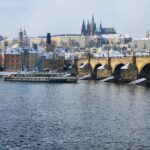
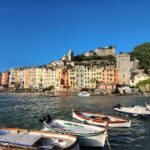

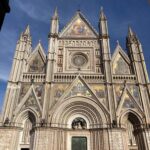
 Book Cover Reveal
Book Cover Reveal  Sneak Preview
Sneak Preview 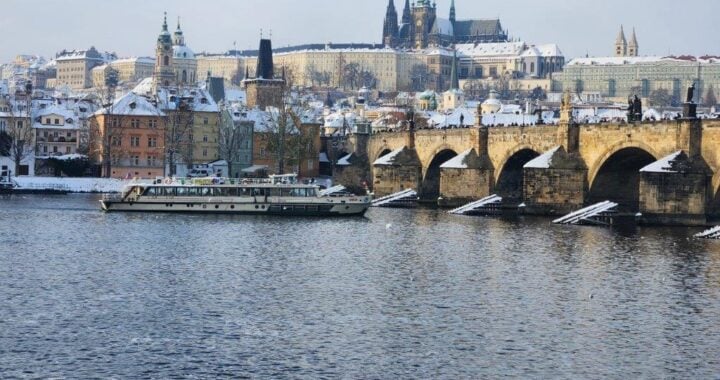 Prague – Winter Wonderland
Prague – Winter Wonderland  Porto Venere – gateway to the Cinque Terre
Porto Venere – gateway to the Cinque Terre 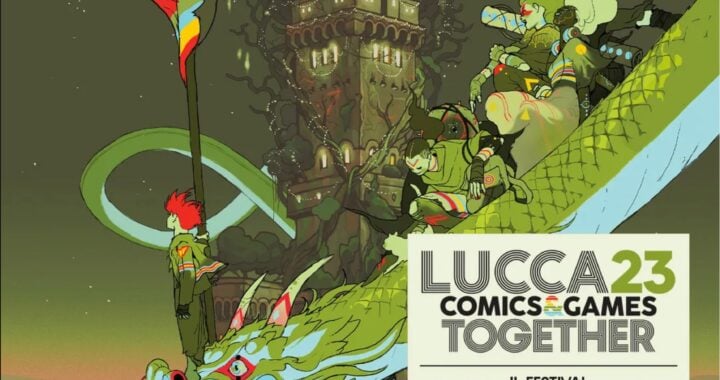 Lucca Comics & Games 2023
Lucca Comics & Games 2023 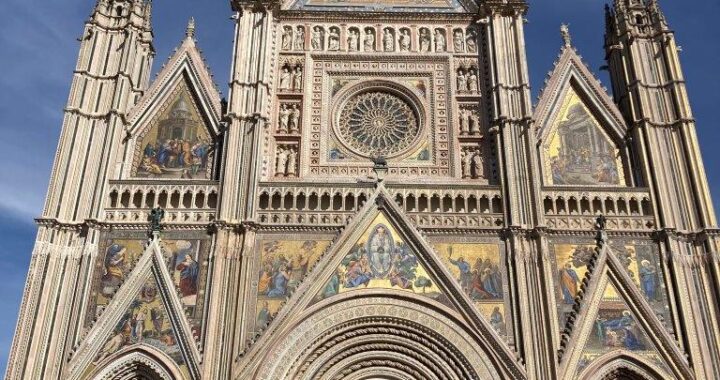 Orvieto – 6 years later
Orvieto – 6 years later